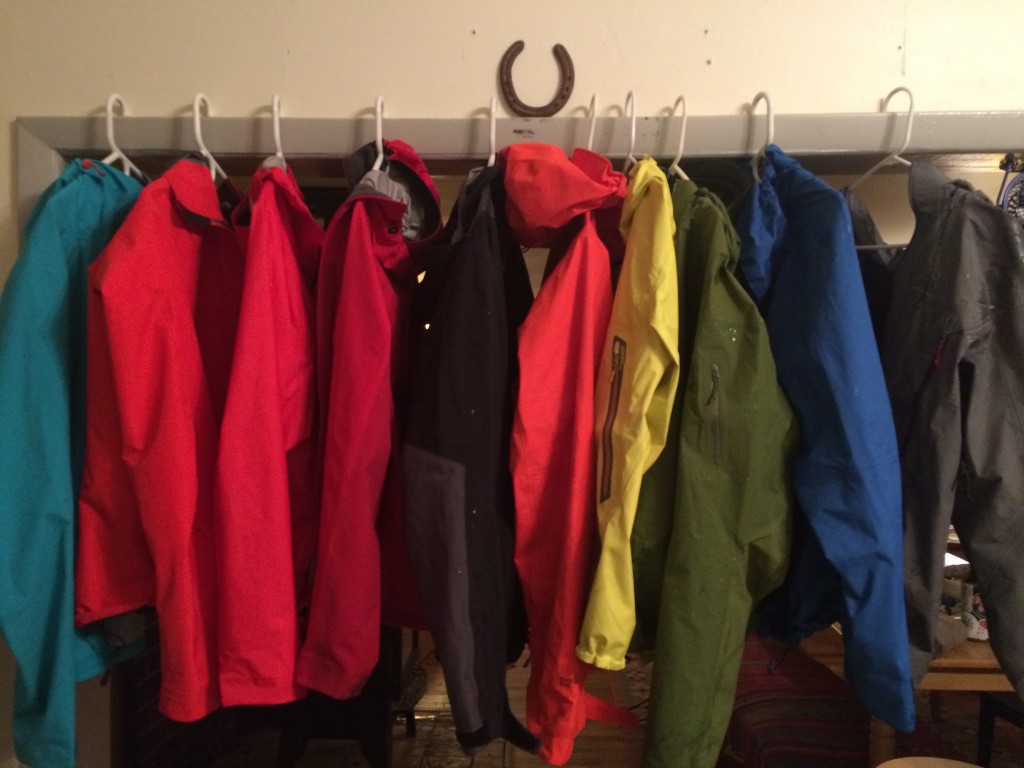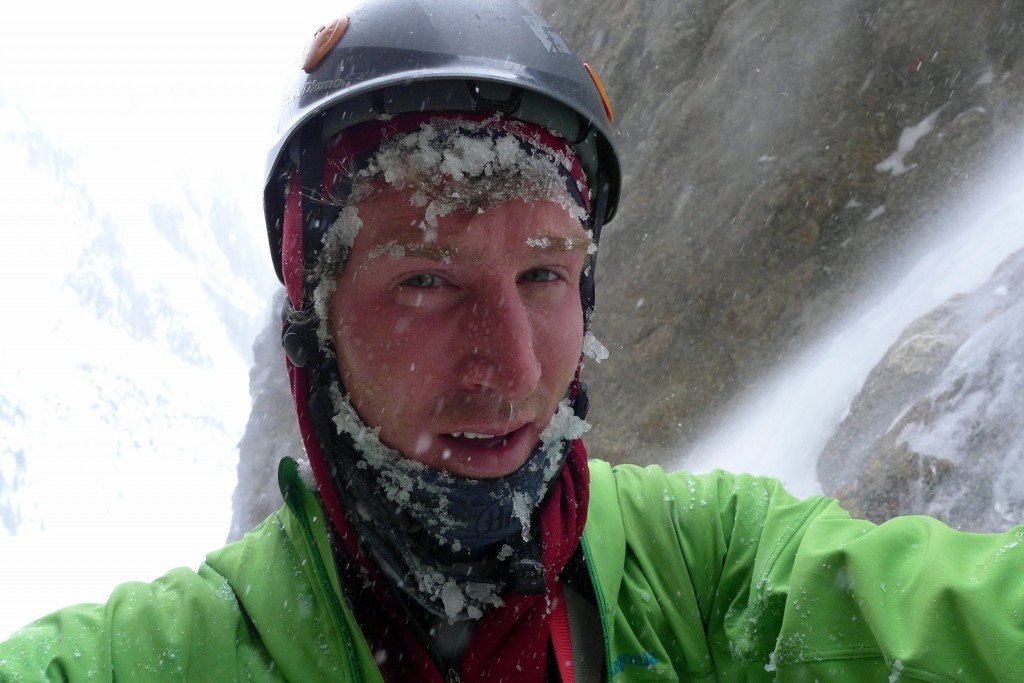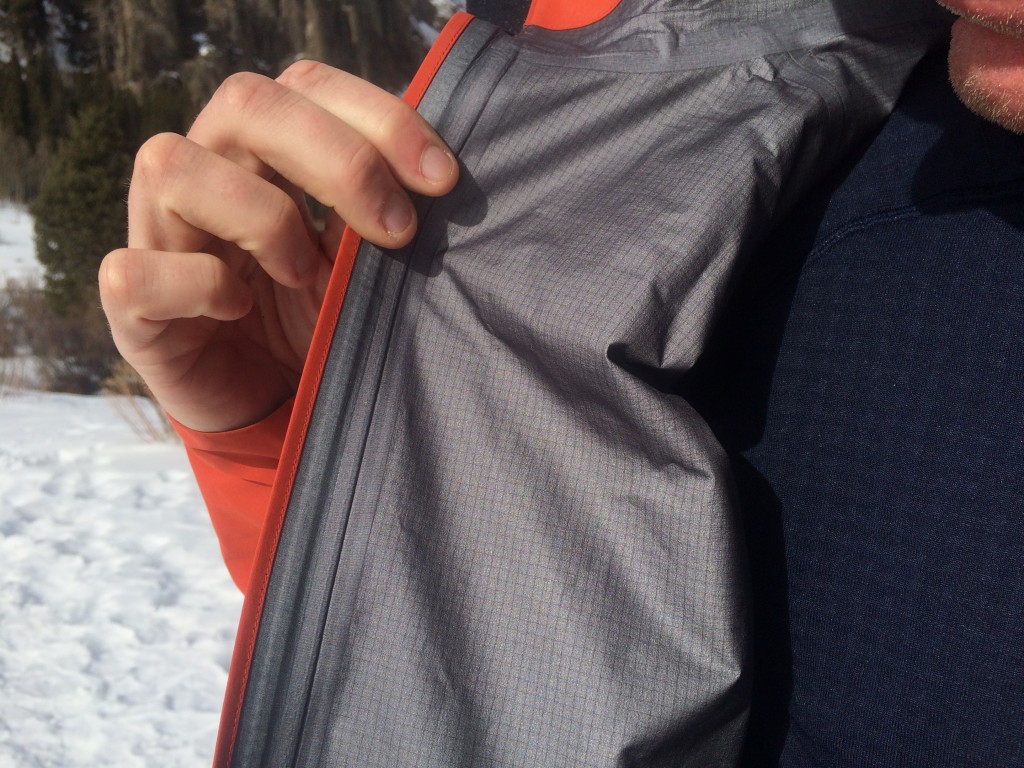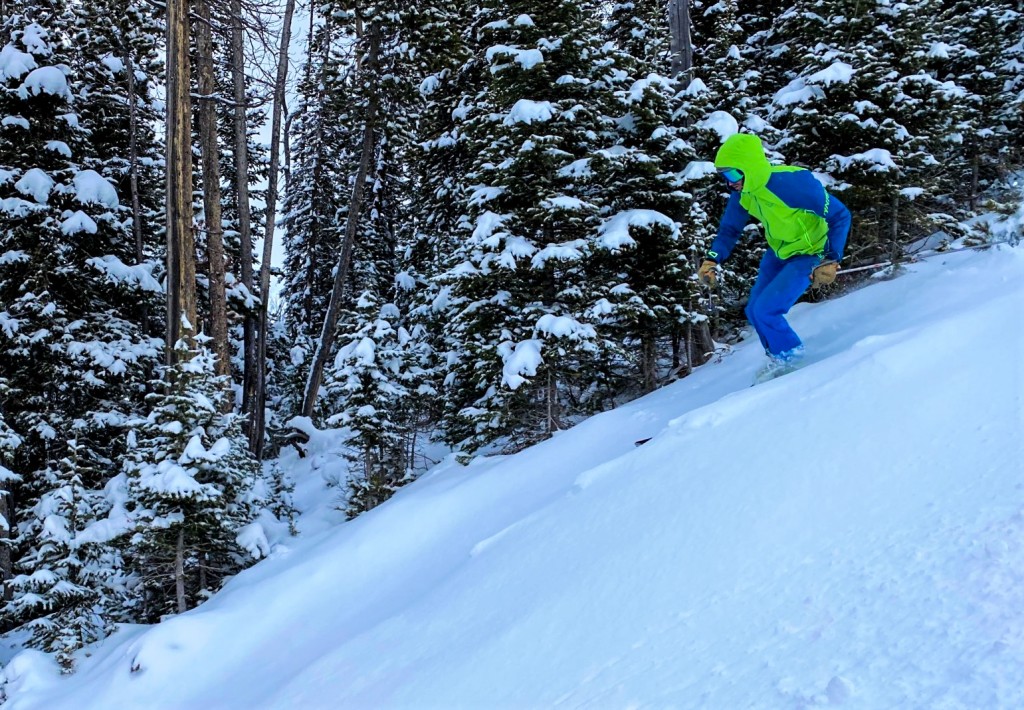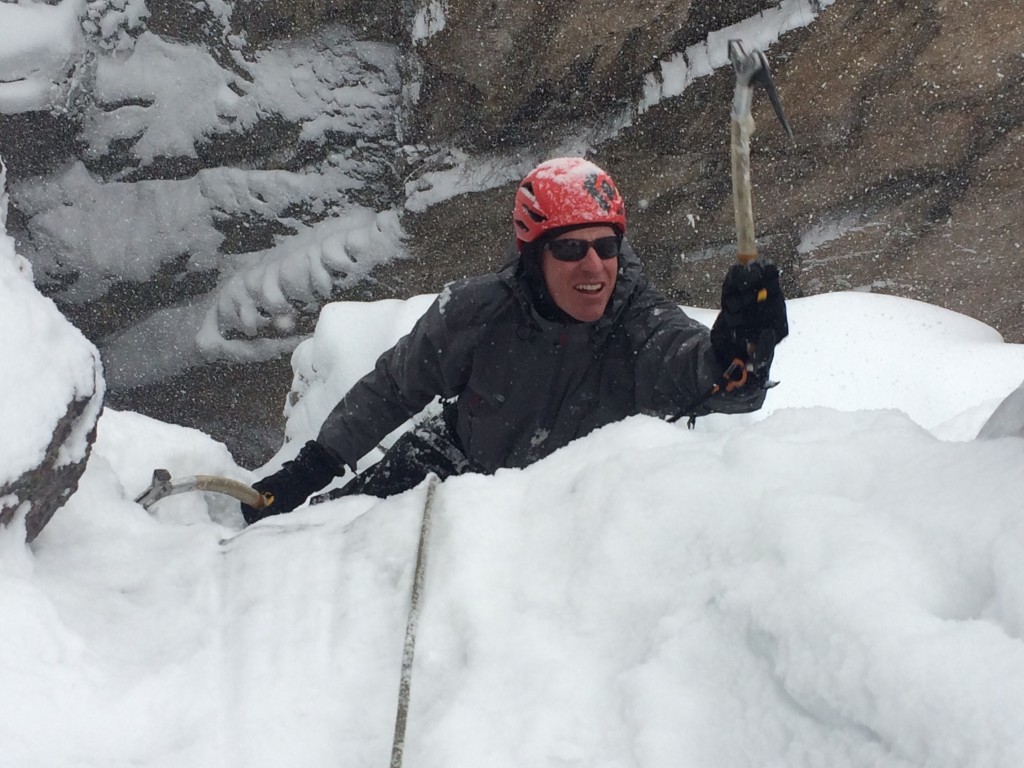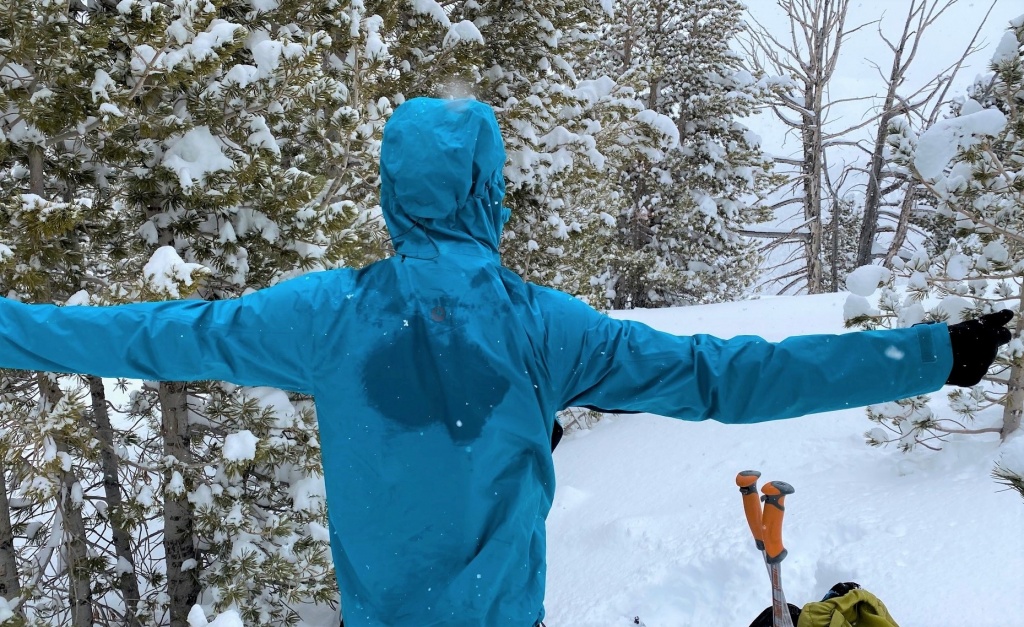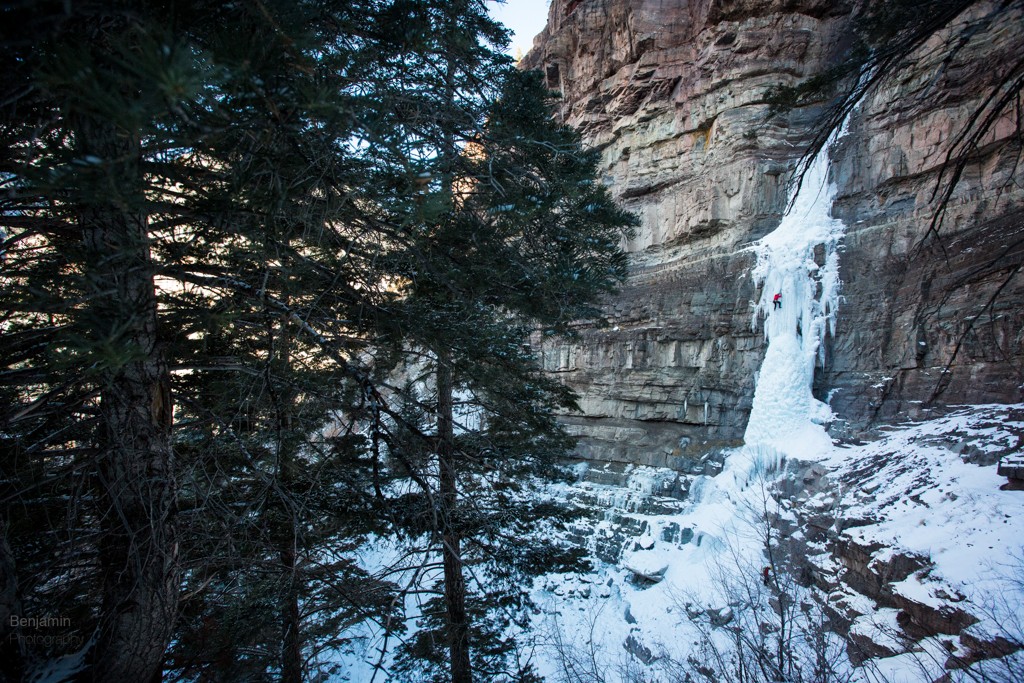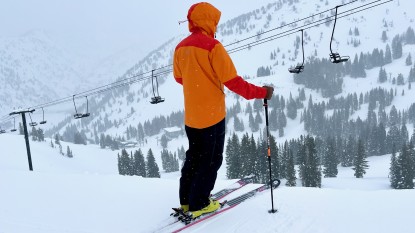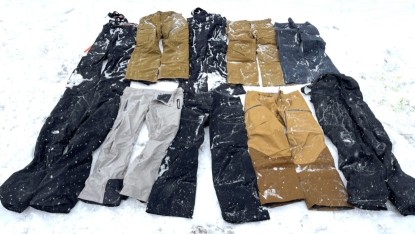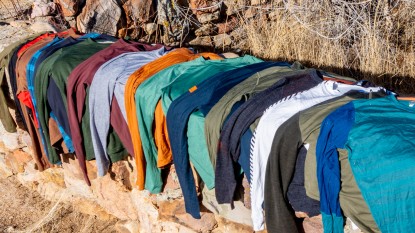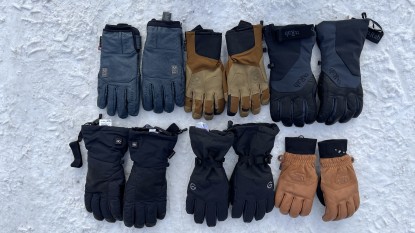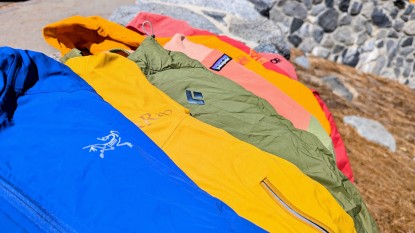Which hardshell jacket is perfect for your next adventure? In our buying advice article, we go deep into the differences between each type of waterproof breathable membrane and talk about the science behind the different available technologies. We also discuss which models and features are important based on your favorite outdoor activities, be it climbing, skiing, or winter camping. Finally, we provide instructions on the care and cleaning of your hardshell so you'll be able to keep the most expensive piece of your layering system going strong for years to come. When you're finished, check out our favorite hardshell jackets, where you can use your newfound knowledge and our comprehensive reviews to find your perfect hardshell.
Hardshell Jacket versus Rain Shell
A rain jacket can keep you dry in rain or snow and is plenty functional if you'll be outside watching the game, catching fish, or sitting around, waiting for the rain to stop. If you're plans include sustained activity during inclement weather, you'll want a jacket that can deal with moisture from the outside and the inside of the jacket. Hardshells are designed to be both waterproof and breathable to ensure you stay dry regardless of precipitation or our own perspiration. Compared to lightweight rain jackets, hardshells are also made from more durable fabrics so they can withstand the rigors of skiing, ice climbing, or mountaineering.
Hardshell jackets are generally made with fancier materials than rain jackets and they're thus considerably more expensive. Deciding whether you need to spend that extra moolah should come down to two considerations: durability and breathability. Do the activities you participate in, and the places you go, warrant a more durable jacket? If so, consider a hardshell. Do you simply need rain protection during low exertion activities, or are you hoping to stay dry while also charging uphill? If the latter, we recommend a hardshell.
We believe that rain jackets are best for the “average user” because they provide reliable waterproof protection and reasonable durability at an affordable cost. If you find yourself sprinting in the rain between your car and the coffee shop more than you find yourself alpine climbing, a rain jacket is likely a better choice. Rain jackets are also more than adequate for extended backpacking, and some of our testers have happily brought them along on extended trips to places as far-flung as Antarctica.
On the other hand, a hardshell jacket is ideal for hardcore users that thrash through high abrasion environments or spend long periods (weeks to months) outside in harsh weather, especially in winter. They are a more technologically advanced piece of gear and do a much better job of letting heat-generated moisture escape from inside of the jacket. They are made from better materials using more advanced production techniques and have higher-quality designs and features (hoods, pockets, zippers, adjustment cords).
Construction of Hardshell Jackets
The shells we tested for this review are largely constructed from three layers fabrics. Three-layer shells consist of:
- An external face fabric made of nylon or polyester that provides durability and protects the jacket and user from outside abrasion
- A middle membrane layer that is both waterproof and breathable
- An internal fabric that protects the membrane and reduces friction by allowing your base layers to move freely beneath the jacket
Three-layer hardshell jackets are the heaviest, most durable, most comfortable, and also the most expensie waterproof jackets available. When it comes to construction, the main difference between the jackets we tested is the type of waterproof/breathable membranes that they incorporate. Most are made from some type of Gore-Tex brand material but a few utilize their own proprietary materials.
Below is a rough and general breakdown of the function of the three layers that make up a waterproof/breathable hardshell jacket:
Outer Layer
Also known as the face fabric, this layer is what you see on the outside of a jacket. It is usually made from nylon or polyester fibers woven together to provide a durable protective layer. The linear density of the fibers ismeasured in denier, and a higher denier number generally corresponds to higher durability. Other factors, however, like the type and tightness of the fabric weave, can also influence toughness. All face fabrics receive a Durable Water Repellent finish, which is a chemical application that helps repel water on contact, causing it to bead up, rather than soak in, to the outside of a jacket.
Waterproof/Breathable MembraneSandwiched in the middle is the membrane that gives the jacket its waterproof and breathable attributes. These membrane feature extensive tiny holes that are so small that water droplets cannot pass through. Yet the same tiny holes are also large enough that water vapor can squeeze through. This clever hole sizing gives the membrane its seemingly contradictory attributes of waterproof and breathable. There are many different proprietary membranes on the market today, but for decades this niche has been dominated by products designed by W.L. Gore and marketed as Gore-Tex. Most of the jackets we reviewed use some variety of Gore-Tex membrane, although a few use competing membranes, which are described in further detail below.
Inner LayerOn the inside of a three-layer jacket is a fabric designed to add durability to the membrane by protecting it from abrasion and body oils. It also reduces friction and allows inner garments to move easily against one another. Moreover, in some cases, it helps wick moisture away from the body and toward the membrane. Gore C-knit backer, made by W.L. Gore and paired with their standard three-layer Gore-Tex, is one example of an inner layer fabric.
Durable Water Repellent (DWR) Coatings
Hardshell jackets are generally treated with a DWR (Durable Water Repellent) coating on their face fabric. This is a chemical coating that's designed to repel water when it hits the outside of the jacket and leads to the “beading” effect you notice when water hits a new jacket. The reason why the DWR treatment is important is that it ensures the breathability of the membrane. Without it, a jacket can “wet out,” meaning that the water no longer beads but instead soaks into the face fabric. When that happens, the jacket still retains its waterproof qualities because there is still a waterproof membrane below the face fabric, but the breathability of the membrane can be lost. So if your body is perspiring at all, you will likely quickly feel wet.
How: 1) lay it down on a clean surface or drape the shoulder area over one of your arms, 2) fold its arms in across the chest, 3) fold the sides of the torso in so that it is roughly in thirds, 4) roll it up and tuck it into the hood.
This minimizes the amount of fabric that contacts the dirt and grime on the inside of your pack, and rolling will result in fewer creases than haphazard stuffing.Unfortunately, all DWR coatings eventually wear off due to abrasion, dirt, and body oils. This inevitable failure (which can happen quickly with intense usage) is the downfall of waterproof/breathable shells because they're only breathable as long as their face fabric is dry. Therefore, you must clean your hardshell jacket and maintains its DWR coating regularly to ensure it stays breatheable (see the bottom of this article for advice on cleaning your hardshell jacket and reapplying the DWR coating).
Waterproofness and Breathability
One big conclusion from our testing is that the specific waterproof/breathable fabric matters less than the design, weight, fit, and features of the jacket. All of the waterproof/breathable membranes on the market work, and have a mountain of marketing money behind them to try to prove their novel “superiority”. The reality is that even after months of daily hands-on testing, it is nearly impossible to determine exactly which one works the best. All the evidence is anecdotal and too dependent on the varying conditions of the day.
We did our best to be as consistent as possible with our stationary bike testing, but how sweaty we became in each jacket depended on our testers and how each jacket fit. It's challenging to assess the breathability of all the different breathable membranes fairly. Everyone is different, and some of our testers are just plain sweaty, swearing that no jacket ever quite breathes enough. There is an endless set of variables that influence breathability, and we realize that a stationary bike test doesn't fully represent the actual user experience. However, we believe it does give us a fair basis for comparison. Remember that if you get soaked by your own sweat on a cold day, the moisture can compromise the insulative power of your other layers, putting you in an uncomfortable and potentially dangerous situation.
Breathability is the ability of a fabric to allow moisture vapor to be transmitted through the material. It's a function of the difference between the relative humidity inside the jacket compared to that outside. When exercising, the humidity inside the jacket can quickly rise to 100%. If the air outside the jacket has a lower humidity, the laws of physics dictate that these masses of air will try to equalize themselves, and the millions of microscopic pores in a breathable membrane make this exchange possible. This exchange will happen faster when the differences in relative humidity between the inside and outside of the jacket is largest.
The best “breathing” conditions for a jacket is when you are very hot and sweaty, and the air outside is frigid, dry, and even windy. Fortunately, these are also excellent conditions for ski touring or ice climbing — two of the best applications for your hardshell. The worst conditions are when it is warm and humid outside; a jacket won't breathe very well in a temperate rain forest, because there is almost no difference between the conditions inside the jacket and outside. Similarly, when it is very cold and humid outside, warm moist air inside your jacket can condense when it encounters the cool liner of your jacket, causing liquid to build up on the inside of your jacket (the coke bottle effect), inspiring you to curse the inadequacy of your expensive clothing. Faced with these limitations of physics, be happy you're not charged with trying to design the perfect breathable membrane!
Although the industry lacks a uniform testing system that would provide comparable results, water resistance can be quantified with a water column test. This procedure measures the height of water that can be held vertically in a column over a fabric swatch before the inherent pressure causes the fabric to leak. The majority of hardshell jackets tested here have water column ratings of 20,000 mm, which far exceeds the pressures found in environmental conditions. Hurricane-force rain, for example, produces an equivalent pressure of 7,000 mm while a fire hose held at 30 feet only supplies 11,000 mm. Thus, all of the shells tested here are functionally waterproof.
Specific Waterproof/Breathable Technologies
We don't think that specific waterproof/breathable technologies should be a starting point for determining which hardshell jacket to buy. For the curious, however, we'll do our best to briefly describe the various technologies available on the market today.
Gore-Tex
The standard Gore-Tex 3-layer membrane is found in mid-level jackets, pants, and footwear. Garments using this technology are marketed as being “durably waterproof, windproof, and highly breathable.”
The Gore-Tex Pro membrane, formerly Pro Shell and XCR (Extended Comfort Range) before that, is the company's premium product that offers a 35%+ increase in breathability over standard 3-layer Gore-Tex. It also provides the company's best abrasion-resistance-to-weight ratio. Pro is W.L. Gore's most expensive membrane. All jackets that feature it have three layers and are designed for professionals, such as athletes and guides, who spend extended periods outside. Both the Pro and Standard 3-layer consist of an outer face fabric, an ePTFE membrane, and a microgrid liner fabric. The Pro membrane is air permeable, whereas the Standard 3-layer membrane has an ultra-thin polyurethane layer that is not air permeable.
Gore-Tex Pro jackets must be paired with face fabrics of at least 40-denier for higher abrasion resistance and longer durability. This was the single most popular membrane used in the jackets we tested for this review and is found on many of the top performers, including the Editors' Choice award-winning Arc'teryx Alpha FL.
Gore C-Knit backer technology is not a new type of membrane, but rather a new type of laminate that comprises the inner of the three layers. The laminate uses a new “circular knit form” (hence C-Knit) that, according to Gore, allows layers to be up to 10% lighter and 15% more breathable using less bulky construction. The lightweight Dynafit Radical is one example of a jacket that uses this as its inside layer.
Gore-Tex Active is W.L. Gore's newest, lightest, and most breathable membrane. It is an improved, three-layer version of their PacLite fabric that is intended for high output activities of shorter duration (weekend backcountry ski trips, fast and light alpine climbs). It is not designed to be worn under a 70-pound pack. Active Shell achieves its lower weight and increased breathability through improved construction — a polyurethane layer serves as an adhesive that bonds the inner lining to the membrane, a process that uses less glue than Gore-Tex Pro. Additionally, the Active membrane is thinner than Gore's other membranes, so it weighs less. Our stationary bike test was not able to quantify that Active Shell is more breathable than Pro, but in the field, it sure feels that way, and it is noticeably more mobile and supple, with less crinkly noise when moving in the jacket. To take full advantage of this membrane's low weight, it is usually paired with thin (think 20-denier) shell fabrics.
Finally, all W.L. Gore membranes boast oleophobic properties. This means they resist body oils, which can tend to build up in the neck, shoulders, and hood areas. Each type of Gore membrane has the same film and liner, but manufacturers get to choose from different face fabrics. In general, higher denier and tighter weaves increase the face fabric's durability, but with corresponding costs in terms of weight and price.
All waterproof breathable technologies are different. Gore-Tex 3-layer membranes contain over nine billion microscopic pores per square inch. These pores are 20,000 times smaller than a water droplet, but 700 times larger than a water vapor molecule. Contrary to popular belief, water vapor does not pass through this type of Gore-Tex. Instead, the shell's membrane's thin PU (polyurethane) layer forces moisture to move through the membrane via solid-state diffusion — the PU layer absorbs water vapor, which moves through the film as water droplets until it reaches the outside when it can then return to water vapor and evaporate. While this process most certainly does work, it can be uncomfortable to experience the 95% relative humidity levels that may be required on the inside of the jacket to achieve solid-state diffusion.
Another thing that differentiates W.L. Gore from its competition is the company's role in the design and construction of every garment that bears its name. Any company that uses Gore-Tex is required to use W.L. Gore-certified factories and machinery. The fabric maker is also closely involved in the design and production processes. Every product must adhere to specific, often controlling, standards set by W.L. Gore. If a company wants to make a jacket with Gore-Tex, the process works roughly like this: W.L. Gore sends the company material samples, and the company designs and assembles the product. W.L. Gore then reviews its style while analyzing things like zippers, seam tape, hood design, wrist closures, etc. As an example, all active shell products must weigh under 14 ounces, with a trim fit, few pockets or mesh-lined pockets, and as little seam tape as possible.
After style approval, W.L. Gore subjects the gear to rigorous water resistance, wind resistance, and durability testing. If it meets all qualifications, they then give the go-ahead for production, but not without branding — every product that uses Gore-Tex must have a large hang-tag and W.L. Gore logo. Although costly and time-consuming, these protocols have a dramatic consequence: there are no “bad” Gore-Tex products. Every W.L. Gore hardshell jacket we tested is well-constructed and reasonably well-designed. Better yet, all Gore-Tex products come with an unconditional lifetime warranty. You can return any product at any point if you're dissatisfied with its performance and this includes any issue related to water resistance, durability, or breathability. No other waterproof/breathable manufacturer offers the same warranty. So you get what you pay for, and with Gore-Tex, you certainly pay (and get) a lot.
Outdoor Research AscentShell and The North Face Futurelight
AscentShell and Futurelight are proprietary membranes used by Outdoor Research and The North Face, respectively. Although the details behind these membranes are not public, both are constructed by weaving liquid polyurethane into a randomized “matrix”, which becomes a breathable-waterproof film that gets sandwiched in the middle of a three-layer fabric. We will admit to not understanding the physics behind these special membranes, but we can attest to the results of their design.
The main benefits seem to be the fact that they are air-permeable, meaning that they allow sweat and water vapor inside your jacket to dry by being exposed to air that passes through the jacket, rather than using the high relative humidity inside the jacket to force solid-state diffusion. There is a fine line between allowing air to pass through the membrane while still maintaining waterproofness, but AscentShell and Futurelight seem to tread that line quite well. In our controlled stationary bike testing, it was very apparent to us that we stayed drier and cooler while wearing the Outdoor Research Interstellar and The North Face Summit L5 LT jackets than we did in comparable Gore-Tex Pro jackets.
Another advantage of these materials is that they can be made stretchy, which is an excellent quality that adds mobility to the clothing. And a final benefit is that they can be produced at lower costs than licensed Gore-Tex apparel. The main drawback to the jackets we tested with these fabrics is that they both use thin 20-denier face fabric that felt pretty fragile in our hands-on tests. This might be remedied in other jackets using the same membranes if they incorporate higher denier face fabrics.
Choosing the Right Hardshell Jacket
Intended Use
The first step in deciding the best hardshell jacket for you is determining what the intended use will be. Alpine climbing and backcountry skiing place wholly different demands on a jacket. In the case of the former, we think durability is more important, along with a smooth waist, to minimize irritation when wearing a climbing harness. For skiing, in contrast, abrasion isn't as much of a concern, so it's probably okay to use thinner fabrics that can breathe better. Style is also generally more important on the slopes so many will prefer a looser fit.
Another consideration is the type of climate where you'll primarily be using your hardshell. In a place with a wetter climate like the Pacific Northwest, waterproofness is going to be a top priority because it rains and snows so frequently. California's High Sierra, in contrast, is a dry range with precipitation that's largely concentrated in winter (if we're lucky). Here, breathability should be more of a concern, along with weight and packability, since the jacket will spend more time packed away. If you don't mind spending the cash, it really can be worth owning a few hardshells, because finding a perfect all-rounder isn't easy.
Price Range
There is more than a $500 difference between the cheapest and most expensive products in this review. Like a lot of things in this world, we found that price largely corresponds to performance, albeit with a few outliers. Although we appreciate the enhanced breathability of some of the cheaper, non-Gore-Tex materials, we didn't find them to be nearly as durable. Gore-Tex hardshells start around $400, and all the jackets with this material can boast comparable weather protection. As prices rise, however, we usually notice burlier materials and more sophisticated designs.
In general, hardshell jackets are worth their astronomical prices for dedicated alpine climbers and backcountry skiers. For occasional users or the budget-conscious, a rain jacket is a worthy alternative. In many circumstances, these layers will serve your needs, and if they wear out too quickly, you can often get a second one for cheaper than a single hardshell.
Be sure to consider the outdoor activities where you plan to use your hardshell jacket. Backcountry skiing is intrinsically aerobic (you spend 90% of the time moving and sweating), so a lightweight, air-permeable shell will probably keep you drier from within. On the other hand, ice climbing tends to be a colder activity with long periods of belaying and standing still while potentially being dripped on. In this case, a heavier Gore-Tex shell will most likely keep you warmer and drier from the outside.
Color
Most hardshell jackets come in an extensive range of color options. Black always looks cool and dries quickly in the sun, but it isn't optimal for safety in the backcountry. Instead, it may be safer to choose a color that's highly visible against your surroundings.
The threat of being caught in an avalanche or taking a fall high on a mountain is genuine, and there is no doubt that highly visible colors could significantly assist your friends and rescuers should something bad befall you, enhacing your chances of being seen and subsequently rescued. So next time you are thinking of buying a white, black, brown, or navy jacket, consider whether it might not be more prudent to be wearing bright red, electric blue, or neon yellow out in the hills. Your life could very well depend on it. A few of the jackets in our review have a built-in Recco reflector to help rescuers locate you, but bright colors are still a big advantage if people are trying to spot you from a helicopter.
Waterproof Breathable Care Tips
A key part of maintaining the breathability and weather resistance of your hardshell jacket is keeping it as clean as possible. Dirt and abrasion are your shell's worst enemies. Both will wear away the durable water repellent (DWR) coating and fray the face fabric, which can, in turn, reduce the shell's breathability. Without a healthy DWR finish, that face fabric will absorb more water and become heavier and less breathable. A fresh DWR treatment, in contrast, will provide that magic “water off a duck's back” effect that we all hope to see from an expensive jacket.
Restore the DWR Coating
You can tell a fabric's DWR coating has worn off when the fabric starts to “wet out” (absorb water rather than shedding it). Restoring the DWR will improve breathability and user comfort. It's best to do this after washing the jacket. Spray-on or topical DWR treatments are better than wash-in treatments because they don't affect the garment's breathability. Nikwax TX Direct Spray-On and ReviveX Spray-On are both good options.
Wash Your Hardshell FrequentlyBody oils that accumulate in the hood, neck, and shoulder areas can also reduce the membrane's performance. Follow your jacket's laundry instructions or use machine-wash warm (104°F/40°C), powder or liquid detergent - no fabric softener. ReviveX Synthetic Fabric Cleaner, Granger's Performance Wash, and Nikwax Tech Wash are tried and true soaps. The excellent video below describes best practices for washing a hardshell jacket.

